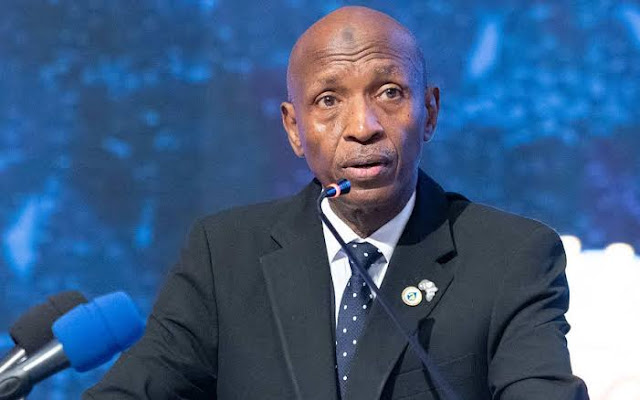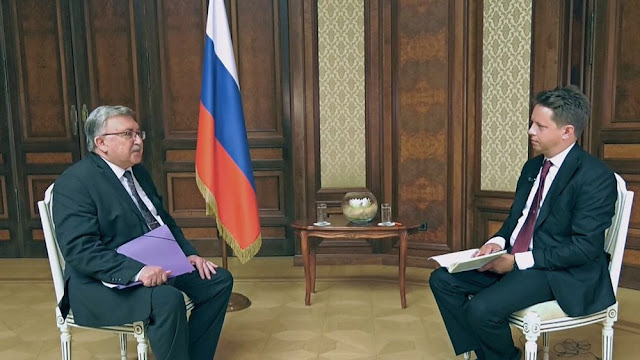In a pivotal development for Africa’s energy sector, the African Petroleum Producers Organization (APPO) is set to convene a high-level ministerial meeting to determine the official launch date of the long-anticipated African Energy Bank (AEB). This initiative, aimed at bolstering financial support for oil and gas projects across the continent, represents a strategic effort to reduce Africa’s reliance on external funding sources and foster intra-African investment in energy infrastructure. The meeting, expected to bring together energy ministers from APPO member states, underscores the organization’s commitment to addressing the unique challenges faced by African petroleum producers in an era of global energy transitions and economic uncertainties.
The decision to prioritize the AEB’s launch comes at a time when Africa, despite holding vast hydrocarbon reserves, grapples with chronic underinvestment in its energy sector. With the meeting slated for the near future—details of which are being finalized by APPO’s secretariat—the outcome could mark a transformative moment for the continent’s energy landscape. According to sources within APPO, the discussions will focus not only on the launch timeline but also on governance structures, capital mobilization strategies, and integration with broader African Union (AU) agendas. This development highlights the growing momentum toward energy sovereignty, as African nations seek to harness their resources for sustainable development rather than serving as mere exporters to wealthier regions.
Understanding the African Energy Bank: Objectives and Rationale
The African Energy Bank is envisioned as a specialized financial institution dedicated to financing upstream, midstream, and downstream activities in the oil and gas industry across Africa. Modeled after successful regional development banks like the African Development Bank (AfDB), the AEB aims to provide concessional loans, equity investments, and technical assistance tailored to the needs of African energy projects. Its primary objective is to bridge the massive funding gap that has long hindered the exploration, production, and distribution of hydrocarbons on the continent.
Africa possesses approximately 7.5% of the world’s proven oil reserves and 7.3% of natural gas reserves, according to data from the Oil & Gas Journal and BP Statistical Review of World Energy. Yet, the continent accounts for only about 7% of global oil production and even less in terms of refining capacity. This disparity is largely due to insufficient capital inflows, exacerbated by high-risk perceptions from international investors, volatile commodity prices, and geopolitical tensions. The AEB seeks to address these issues by pooling resources from African governments, private sector players, and development partners, thereby creating a more stable and Africa-centric funding mechanism.
The rationale behind the AEB is rooted in the recognition that external financing, often dominated by Western and Asian institutions, comes with strings attached—such as stringent environmental conditions or profit repatriation that benefits foreign entities more than local economies. By establishing the AEB, APPO aims to retain a greater share of energy revenues within Africa, promoting job creation, technology transfer, and infrastructure development. For instance, the bank could fund refinery projects in countries like Nigeria and Angola, where local refining capacity remains woefully inadequate, leading to billions in lost revenue from importing refined products.
Moreover, in the context of the global push toward net-zero emissions, the AEB is positioned to support a “just transition” for African producers. While Europe and North America accelerate the phase-out of fossil fuels, African nations argue for equitable pathways that allow them to monetize their resources responsibly. The bank’s charter emphasizes sustainable practices, including investments in carbon capture technologies, methane abatement, and natural gas as a bridge fuel to renewables. This balanced approach could position Africa as a key player in the global energy mix, contributing to climate goals without sacrificing economic growth.
The Role of APPO: From Inception to Leadership in Energy Cooperation
To fully appreciate the significance of this ministerial meeting, it is essential to delve into the history and mandate of the African Petroleum Producers Organization. Founded in 2019 and headquartered in Luanda, Angola, APPO emerged from the ashes of earlier regional groupings like the African Oil Producers Organization (AOPO), which lacked the institutional strength to influence policy effectively. APPO now represents 18 member countries, including major producers such as Nigeria, Algeria, Angola, Libya, and Egypt, which together account for over 90% of Africa’s oil output.
The organization’s mandate is multifaceted: promoting cooperation among member states, harmonizing policies on exploration and production, and advocating for Africa’s interests in international forums like OPEC and the International Energy Agency (IEA). Under the leadership of Secretary General Omar Farouk Ibrahim, a Nigerian energy expert with decades of experience, APPO has prioritized initiatives like the AEB to counter the marginalization of African voices in global energy governance. Ibrahim has repeatedly emphasized that “Africa’s energy future must be shaped by Africans,” a sentiment echoed in APPO’s strategic plan for 2021-2025.
APPO’s efforts have already yielded tangible results. For example, the organization facilitated joint bidding rounds for oil blocks in multiple countries, reducing costs through shared geological data and expertise. It has also launched capacity-building programs, training over 5,000 African professionals in petroleum engineering and financial management. The AEB fits seamlessly into this framework, serving as a financial arm that complements APPO’s technical and diplomatic roles. By deciding the launch date at the upcoming ministerial meeting, APPO signals its readiness to operationalize this vision, potentially injecting billions into the sector.
The ministerial meeting itself is a cornerstone of APPO’s governance structure. Held periodically, these gatherings allow energy ministers to align national policies with continental objectives. Past meetings have addressed critical issues such as the impact of the Russia-Ukraine conflict on energy prices, the role of liquefied natural gas (LNG) exports from Africa to Europe, and strategies to mitigate the effects of energy subsidies in member states. The agenda for this particular session, as leaked in preparatory documents, includes technical presentations on the AEB’s operational model, risk assessment frameworks, and partnerships with institutions like the AfDB and the World Bank.
Africa’s Energy Challenges: Why the AEB is Urgently Needed
Africa’s energy sector is plagued by a confluence of challenges that make the AEB’s establishment not just desirable but imperative. Foremost among these is the infrastructure deficit. Despite abundant reserves, only about 40% of sub-Saharan Africans have access to reliable electricity, according to the International Energy Agency’s Africa Energy Outlook 2022. Oil and gas projects often stall due to inadequate pipelines, storage facilities, and refineries, leading to flare gas wastage estimated at $4 billion annually—enough to power entire countries like Ethiopia.
Economic volatility further compounds the issue. The COVID-19 pandemic and subsequent geopolitical shocks, including the 2022 energy crisis triggered by the invasion of Ukraine, exposed Africa’s vulnerability to external market forces. Oil prices swung wildly from below $20 per barrel in 2020 to over $120 in 2022, devastating budgets in producer nations. The AEB could stabilize this by offering long-term financing at lower interest rates than those from commercial banks, which often charge premiums due to perceived risks like political instability and currency fluctuations.
Environmental and social concerns also loom large. Africa’s oil-producing regions, such as the Niger Delta in Nigeria or the Lake Chad Basin, have suffered from spills, pollution, and conflicts linked to resource extraction. The AEB’s framework includes environmental, social, and governance (ESG) criteria to ensure projects adhere to international standards, potentially attracting green investors. For example, the bank could finance Angola’s ambitious plans for offshore gas developments while incorporating biodiversity safeguards.
Geopolitically, the AEB represents a pushback against neo-colonial dynamics in energy trade. Historically, African hydrocarbons have been extracted by multinational corporations like Shell, ExxonMobil, and TotalEnergies, with profits largely flowing outward. The bank aims to empower national oil companies (NOCs) such as Nigeria’s NNPC or Algeria’s Sonatrach, enabling them to negotiate better terms and retain equity stakes. This shift aligns with the African Continental Free Trade Area (AfCFTA), which seeks to boost intra-African trade, including in energy products.
From a macroeconomic perspective, the AEB could catalyze growth. The African Development Bank estimates that closing the energy investment gap requires $190 billion annually through 2040. By mobilizing even a fraction of this through the AEB—potentially starting with a capitalization of $5 billion from member contributions—the bank could generate multiplier effects, creating jobs in engineering, logistics, and services. In Nigeria alone, a robust energy sector could add 2-3% to GDP growth, per World Bank projections, while reducing youth unemployment through skill development programs.
The Ministerial Meeting: Agenda, Stakeholders, and Expected Outcomes
The upcoming ministerial meeting is poised to be a watershed event, with delegates from APPO’s 18 member states converging to deliberate on the AEB’s timeline. Hosted virtually or in a key capital like Abuja or Algiers (exact venue to be confirmed), the session will feature keynote addresses from figures like Nigeria’s Minister of State for Petroleum Resources, Heineken Lokpobiri, who has championed APPO’s initiatives. Lokpobiri has stated that “the energy bank will be a game-changer, ensuring that Africa’s resources benefit Africans first.”
The agenda is comprehensive. Day one will focus on reviewing the AEB’s draft charter, including headquarters selection—proposed locations include Libreville, Gabon, or Malabo, Equatorial Guinea, for their strategic positioning. Discussions will cover capital structure, with initial pledges from members totaling $3 billion, supplemented by bonds and private equity. Risk-sharing mechanisms, such as guarantees from the AU or IMF, will be explored to enhance creditworthiness.
Stakeholders extend beyond governments. Representatives from NOCs, international financial institutions, and private investors will participate in side sessions. The AfDB, under President Akinwumi Adesina, has expressed support, viewing the AEB as complementary to its own energy portfolio. Adesina noted in a recent speech that “Africa must finance its own future to avoid debt traps.” Civil society organizations, including environmental groups like Greenpeace Africa, will also weigh in, advocating for transparency and sustainability.
Expected outcomes include a firm launch date—potentially mid-2024, aligning with APPO’s five-year plan—and a roadmap for operationalization. Resolutions on integration with global standards, such as the Paris Agreement, could pave the way for blended finance models combining fossil fuel revenues with renewable investments. If successful, the meeting could inspire similar institutions in other sectors, like mining or agriculture.
Broader Implications: Transforming Africa’s Global Standing
The launch of the AEB via this ministerial decision carries profound implications for Africa’s global standing. Economically, it could diversify funding sources, reducing dependence on volatile oil revenues and fostering resilience against shocks like the 2023 OPEC+ production cuts. By 2030, the bank might finance projects worth $50 billion, per APPO estimates, boosting exports and intra-African trade under AfCFTA.
Socially, the AEB promises inclusive growth. Women and youth, often marginalized in energy sectors, could benefit from targeted programs, such as scholarships for STEM education in petroleum sciences. In countries like Ghana and Mozambique, where recent gas discoveries hold promise, the bank could accelerate local content policies, ensuring that benefits accrue to communities rather than distant shareholders.
Environmentally, the AEB’s emphasis on low-carbon technologies aligns with Africa’s Nationally Determined Contributions (NDCs) under the UN Framework Convention on Climate Change. For instance, it could support Nigeria’s flare gas commercialization initiatives, potentially reducing emissions by 20 million tons of CO2 equivalent annually. This positions Africa as a responsible steward of global energy, countering narratives of the continent as a “pollution haven.”
Geopolitically, the AEB enhances Africa’s bargaining power. As demand for African LNG surges—driven by Europe’s quest to replace Russian gas—the bank could negotiate favorable terms, perhaps through joint ventures with Asian partners like China or India. It also mitigates risks from U.S. sanctions on certain producers, like Sudan, by providing alternative financing channels.
Challenges remain, however. Capitalizing the bank requires political will amid fiscal constraints in many members. Governance issues, such as ensuring equitable voting rights, must be addressed to prevent dominance by larger producers. Regulatory harmonization across borders is another hurdle, as differing national laws could complicate cross-border projects.
The Way Forward: Strategies for Success and Global Partnerships
To ensure the AEB’s success post-launch, APPO must adopt robust strategies. First, digital transformation: leveraging fintech for efficient loan disbursements and blockchain for transparent tracking of funds. Second, capacity building: partnering with institutions like the African Capacity Building Foundation to train bankers and regulators. Third, risk mitigation: establishing a sovereign wealth fund linkage to buffer against oil price downturns.
Global partnerships will be crucial. Collaborations with the Islamic Development Bank for Sharia-compliant financing or the European Investment Bank for green bonds could amplify resources. APPO’s dialogue with OPEC, where many members overlap, could integrate the AEB into broader production strategies.
In conclusion, the APPO ministerial meeting to decide the AEB’s launch date is more than a procedural step—it’s a declaration of Africa’s intent to control its energy destiny. By fostering self-reliance, the initiative promises economic empowerment, social equity, and environmental stewardship. As delegates convene, the world watches, hopeful that this could herald a new chapter of prosperity for the continent’s 1.4 billion people.






